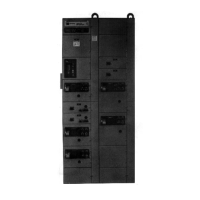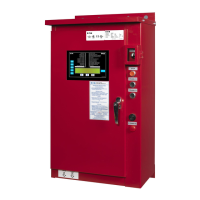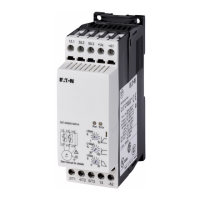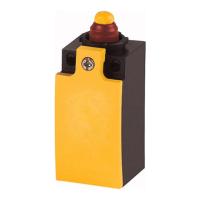- Page 27 -
I.B. 8926-1
CONTACT WEAR AND REPLACEMENT
Contractors are subject to both mechanical and elec-
trical wear during their operation. In most cases mechani-
cal wear is insignificant. The erosion of the contacts is
due to electrical wear. During arcing, material from each
contact is vaporized and blown away from the useful con-
tacting surface.
A critical examination of the appearance of the contact
surfaces and a measurement of the remaining contact
overtravel will give the user the information required to
get the maximum contact life.
OVERTRAVEL MEASUREMENT
Contact life has ended when the overtravel of the con-
tacts has been reduced to .020 inch.
Overtravel of the contact assembly is that part of the
stroke which the moving contacts would travel after
touching the fixed contacts if they were not blocked from
movement by the fixed contacts.
A method of measuring overtravel is as follows:
A. Place a .020 inch feeler gauge between the arma-
ture and magnet, with the armature held tightly
against the magnet.
B. Check continually in each phase, i.e., determine if
circuit from terminal-to-terminal for each pole is open
under these conditions.
C. If there is continuity through all phases, the remain-
ing overtravel is sufficient. If there is not continuity
through all phases, replace all stationary and mov-
ing contacts plus moving contact overtravel springs.
After replacing parts, manually operate contactor to
be sure binding does not occur.
CONTACTOR TROUBLESHOOTING CHART
Defect Cause Remedy
Short Low contact Adjust overtravel,
contact force replace contacts, and
life replace contact springs
as required to correct
contact force.
Contact bouce Correct improper
on opening or voltage applied to coil.
closing Correct any mechanical
defects or
misalignment.
Abrasive dust Do not use emery cloth
on contacts to dress contacts.
Rectangular slot for scissors
One 1/411 or 5/16" diameter
padlock hasp.
Rotate lock plate for one to three
3/8" diameter padlock hasp locks.
Fig. 38
A
B
C

